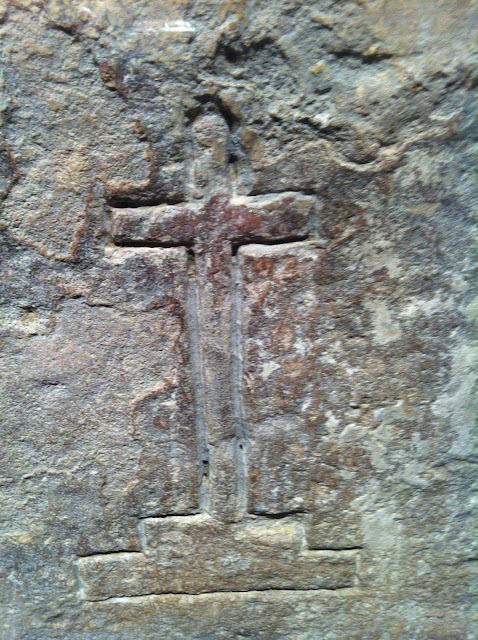This post comes from 1649 and concerns the dying confession purportedly made by the hangman who dispatched Charles I.
THE CONFESSION OF THE HANGMAN CONCERNING His beheading his late Majesty the King of Great Brittain (upon his Death bed) who was buried on Thursday night last, in white Chappell Church-yard, with the manner thereof.
Upon Wednesday last (being the 20. of this instant June, 1649.) Richard Brandon, the late Executioner and Hang-man, who beheaded his late Majesty, King of Great Brittain, departed this life. But during the time of His sicknesse, his Conscience was much troubled, and exceedingly perplexed in mind, yet little shew of repentance, for remission of his sins, and by-past transgressions, which had so much power and influence upon him, that he seemed to live in them and they in him. And upon Sunday last, a young man of his acquaintance going in to visite him, fell into discourse, asked him how he did, and whether he was not troubled in conscience for cutting off of the Kings head?
He replyed, yes! by reason that (upon the time of his tryall, and at the denouncing of Sentence against him) he had taken a vow and protestation, Wishing God to perish him body and soul, if ever he appeared on the scaffold to do the act or lift up his hand against him. Further acknowledging, That he was no sooner entred upon the scaffold, but immediatly he fell a trembling, and hath ever since continued in the like agony.
He likewise confessed, that he had 30. pounds for his pains, all paid him in half Crowns, within an hour after the blow was given, and that he had an Orenge stuck full of Cloves, and a handkircher out of the Kings pocket, so soon as he was carryed off from the Scaffold, for which Orenge, he was proffered 20. shillings by a Gentleman in Whitehall, but refused the same, and afterwards sold it for tens in Rose-mary Lane.
About 6 of the clock at night, he returned home to his wife living in Rose-mary lane, and gave her the money, saying, That it was the deerest money that ever he earn'd in his life, for it would cost him his life. Which propheticall words were soon made manifest; for it appeared, that ever since he hath been in a most sad condition, and upon the Almighties first scourging of him with the Rod of meeknesse, and the friendly admonition of divers friends, for the calling of him to repentance, yet he persisted on in his vicious Vices, and would not hearken thereunto, but lay raging and swearing, and still pointing at one thing or another, which he conceived to appear visible before him.
About three dayes before he dy'd he lay speechlesse, uttering many a sigh and heavy groan, and so in a most desparate manner departed from his bed of sorrow. For the buriall whereof, a great store of Wines were sent in, by the Sheriff of the City of London, and a great multitude of people stood wayting to see his Corps carryed to the Church-yard, some crying out, Hang him Rogue, bury him in the Dung-hill; others pressing upon him, saying, They would quarter him, for executing of the King: Insomuch, that the Church-wardens and Masters of the Parish were fain to come for the suppressing of them, and (with great difficulty) he was at last carryed to White-chappell Church-yard, having (as it is said) a bunch of Rosemary at each end of the coffin, on the top thereof, with a Rope tyed crosse from one end to the other.
And a merry conceited Cook living at the sign of the Crown, having a black Fan (worth the value of 30 shillings) took a resolution to rent the same in pieces, and to every feather tyed a piece of pack-thread dy'd in black Ink, and gave them to divers persons, who (in derision) for a while, wore them in their hats.




















































